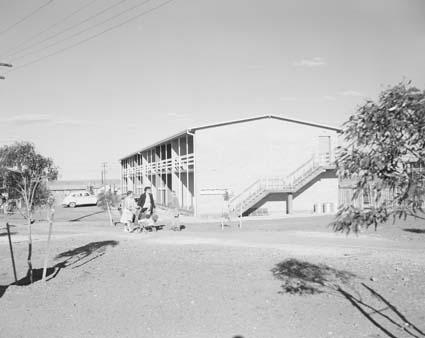
by Ida Moya
I’m back from a whirlwind of helping the data analysts at Los Alamos get their FORTRAN formulas running on that balky old IBM Stretch computer. I can see why IBM only made 8 of these things. It is miraculous to have a computer that can fit into a single room, but this stretch (pardon the pun) in computing technology still averages only 17 hours uptime a day — and that’s also a stretch (no more, I promise).
When it breaks, this swarm of white-coated men in ties comes in and fusses around with it with a bunch of special tools, as well as the set of ALDs (Automated Logic Diagrams) that come with every IBM computer. The way those diagrams are produced and updated with punch cards and special line printers is an amazing story, but for another time.
Although we at Los Alamos Scientific Laboratory can comfort ourselves that the Stretch is the fastest computer in the world, I’m still envious of the institutions that have the better-engineered IBM 7090 computers. These are being used for calculations for the exciting Mercury program.

IBM 7090 at the Weapons Research Establishment's headquarters at Salisbury, on the northern outskirts of Adelaide in South Australia.
The Mercury spaceships do not have a computer on board – computers are far too heavy – so for figuring out how to re-enter the earth’s atmosphere the astronauts rely on computations sent by radio from the pair of IBM 7090 computers at the Mercury Control Station at Cape Canaveral. It’s an incredible amount of faith to put in one site, so Mercury control has those two redundant IBM computers, plus another set of computers in New Jersey. A third computer gathering information from the flight is on the other side of the globe — in Adelaide processing tracking data collected at at Weapons Research Establishment in Woomera, Australia. There is also another control center at Muchea, in Western Australia.

Control room of the astronaut tracking station at Muchea in Western Australia, part of US Project Mercury
A lot of people haven’t heard of Woomera, so let me tell you a little bit about it. At Woomera, more is being done than track Mercury astronauts. This part's an open secret, but the Brits and the Aussies are working together there on testing (or doing “trials” as they say) on rockets, missiles, and even atomic weapons. That's why they built this testing range in the middle of nowhere, in the outback of Australia.

Woomera Research Establishment Officer’s mess
A few years ago we had a visit from Bill Boswell, the Woomera director, along with a team from Maths Services, and Mary Whitehead, the leader of the Planning and Data Analysis Group. They were visiting various computer installations at Point Mugu, White Sands, and Cape Canaveral. These are all larger-than life place-names, but they really just represent groups of men and women madly making observations, coding the photographs in a way the computer can understand, and using these results to steer the manned spaceships. Mary and I had time to talk about more prosaic things, like her new apartment (or “flat” as they call it down under) in Woomera village, and the troubles of living so far from civilization.

Mary’s new flat at Woomera
Woomera reminds me a lot of Los Alamos. It is a similar purpose-built town, isolated from the surrounding population by remoteness and security. Entire families live there, with houses, apartments, and schools for the kids. There are clubs and mess halls; a bowling alley and community grocery store. The store sells just canned and packaged food; if you want something fresh the closest produce is 50 miles away. The planners made a lot of efforts to plant trees, most of which failed. Honestly, it sounds awful to me. I love the "Land of Enchantment" (New Mexico), where things actually grow. The two science towns also have odd mixed populations – for Los Alamos, it is the influx of American and foreign scientists, local Hispanos, and the San Ildefonso tribe. In Woomera, it is the influx of British scientists, local Aussies, and the aboriginal people. Personally I think Los Alamos does a better job of integrating the native population.

Community store in Woomera
There’s something about space that is so exciting. Space has it all: exploration, discovery, danger, and destiny. There’s so much more to it than my dry work of computers, trajectory calculations, and strangely named groups that I am so mired in. That’s why I am so excited to find science fiction and Galactic Journey’s reviews, which is opening my mind to our real future in space that this work makes possible.

